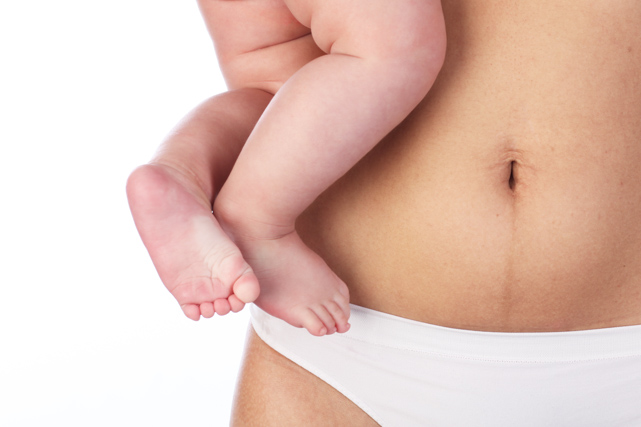Congratulations! You just had a baby! And you’re itching to get back to pre-baby “normal”, including your exercise routine. But—OH!—your poor pelvic floor muscles!
At about six weeks postpartum, your healthcare provider will likely give you the OK to go back to activities that you were doing before you had your baby.
Whoooo hooooo!! Time to make up for lost workouts in the gym!
Not so fast, mama.
Although your health care provider did give you the go-ahead, it doesn’t mean it’s ok for you to go balls-to-the wall, back to box jumps at your local crossfit gym, or to start training for the next marathon.
Wait. WHAT? Why not? Your doctor said it was ok, so it must be.
Right and wrong.
Your healthcare provider may have cleared you for general fitness, but were either of you specific as to which exercises you could start doing? Here’s the thing: although your doc did an internal exam, they likely didn’t actually check your pelvic organs or pelvic floor muscles to see if they were functioning as they should be.
You’re doing your Kegels, right?
Do you even know why your doctor/ob/midwife is telling you to do Kegels during pregnancy and postpartum? To keep your pelvic floor muscles strong and in shape. That's why!
It’s like a workout for your vagina!

Pelvic floor dysfunction
Your pelvic floor muscles are what hold your pelvic organs such as your bladder, uterus, vagina, and rectum inside of your body. Over the last nine months your pelvic floor muscles have been stretched to the max due to the heaviness of baby plus the pushing that ensued during labour. All of this contributes to stretched and lengthened pelvic floor muscles that have lost much of their contractile strength, meaning there is a high probability that the muscles aren’t contracting and relaxing the way that they should be. This can create a potential for unwanted postpartum symptoms as a result of dysfunction in your deep core and your pelvic floor.
Statistics tell us that 21% of moms will become incontinent (lose some control over urinary function) after their first vaginal delivery. If that delivery involved forceps being used, the percentage goes up to 36%. If we don’t know what’s going on internally, we could be exacerbating any issues when we return to fitness too early or too intensely. (Even if you don’t think it’s intense or it’s an exercise you’ve done all of your life.) It’s best to take care of this in the early stages rather than letting it go and experiencing symptoms down the road.
Even if you don’t have a leaky bladder, it doesn’t mean you’re in the clear and don’t have to worry about other postpartum symptoms. Some other symptoms of pelvic floor or core dysfunction include:
- Pelvic organ prolapse (where your pelvic organs can descend down and even come outside of your body)
- A heavy feeling in your vagina that may or may not seem to get heavier throughout the day, or may feel like something is going to fall out of your vagina (a sign of pelvic organ prolapse)
- Persistent low back pain
- Painful sex
- A cone-shaped belly, pooched belly, or belly that grows larger throughout the day
- Leaking urine when you sneeze, cough, laugh or pick up something heavy.
If you’re a mom who experiences any of these symptoms don’t worry, it’s never too late to heal. And if your OB or health care provider has told you that this is your new normal and you just have to live with it, don’t believe it. Most of the time you can heal these symptoms so that you can get back to the exercise regime that you love.
Doing Kegels means contracting and relaxing
Practicing your vaginal exercises (aka Kegels) is what doctors tell us to do to help keep our pelvic floor muscles strong during pregnancy and postpartum. Unfortunately many women do Kegels incorrectly, as research has shown that many women are not relaxing their pelvic floor. This is very important because we don’t want to be walking around doing a Kegel and contracting our vagina muscles all day. This does nothing to strengthen the muscles. It would be like walking around with a flexed bicep muscle all day; your bicep isn’t getting any stronger just because it’s constantly being flexed. So when you’re practicing your Kegels, ensure that you are also letting go of those muscles and relaxing the pelvic floor fully.
Exercising safely to avoid postpartum injury
- Make sure you see a pelvic floor physiotherapist to get an internal check-up. You can discuss with her which exercises you can or cannot start during postpartum. You can find a pelvic health physiotherapist near you by visiting Pelvic Health Solutions.
- Avoid exercises that make it worse: high intensity workouts, jumping, running, crunches, sit ups, anything that makes pain worsen, or makes your stomach pooch out.
- Work with a qualified postnatal personal trainer who specializes in re-training the core and pelvic floor safely after baby. Classes and personal training like my Strong Mom™ classes in York Region fit the bill.
Don’t forget that it took nine months to make your baby, it will take just as much time to recover and get your body back to functioning at your pre-baby level.
*Originally published August 2, 2017









